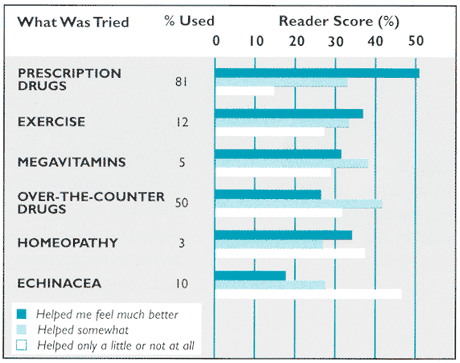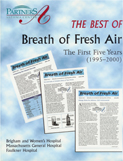Breath of Fresh Air: Feature Articles
Chapter 29: Alternative Medicines for Allergies and Respiratory Infections
Consumer Reports, the popular magazine of Consumer Union that reviews all sorts of consumer products, from laptop computers to vacuum cleaners, surveyed more than 46,000 of its readers regarding their use of alternative therapies for common medical problems. They were asked: what were your two worst medical conditions in the past two years? What did you take to treat them? And how do you rate the results? The outcome of this survey was published in the May, 2000 issue of Consumer Reports. |
“Consumer Reports” surveyed its readers about their use of alternative therapies. |
|
|
The vast majority of the persons suveyed used prescription drugs or over-the-counter drugs to treat their allergies. Ten percent used the herbal remedy, echinacea, 5 percent used megavitamins, and 3 percent homeopathy. These alternative remedies proved disappointing in their effectiveness. Nearly half of the people who tried echinacea found that it "helped only a little or not at all." The responses for homeopathy and megavitamins were nearly evenly split among "helped me feel much better," "helped somewhat," and "helped only a little or not at all." Similar results were obtained for the use of alternative therapies to treat respiratory infections. Twenty two percent tried echinacea, but more than 40% found it not helpful. Garlic and megavitamins were also tried and were considered equally ineffective. Only exercise was found more often helpful than not among the alternative therapies tried. Advice from the editors of Consumers Reports included the following recommendations:
They point out that many alternative remedies have not been safety-tested in children, and they note that many supplements are sold without childproof caps. |
Many readers tried alternative remedies for respiratory infections and allergies. Few found them very helpful. |


